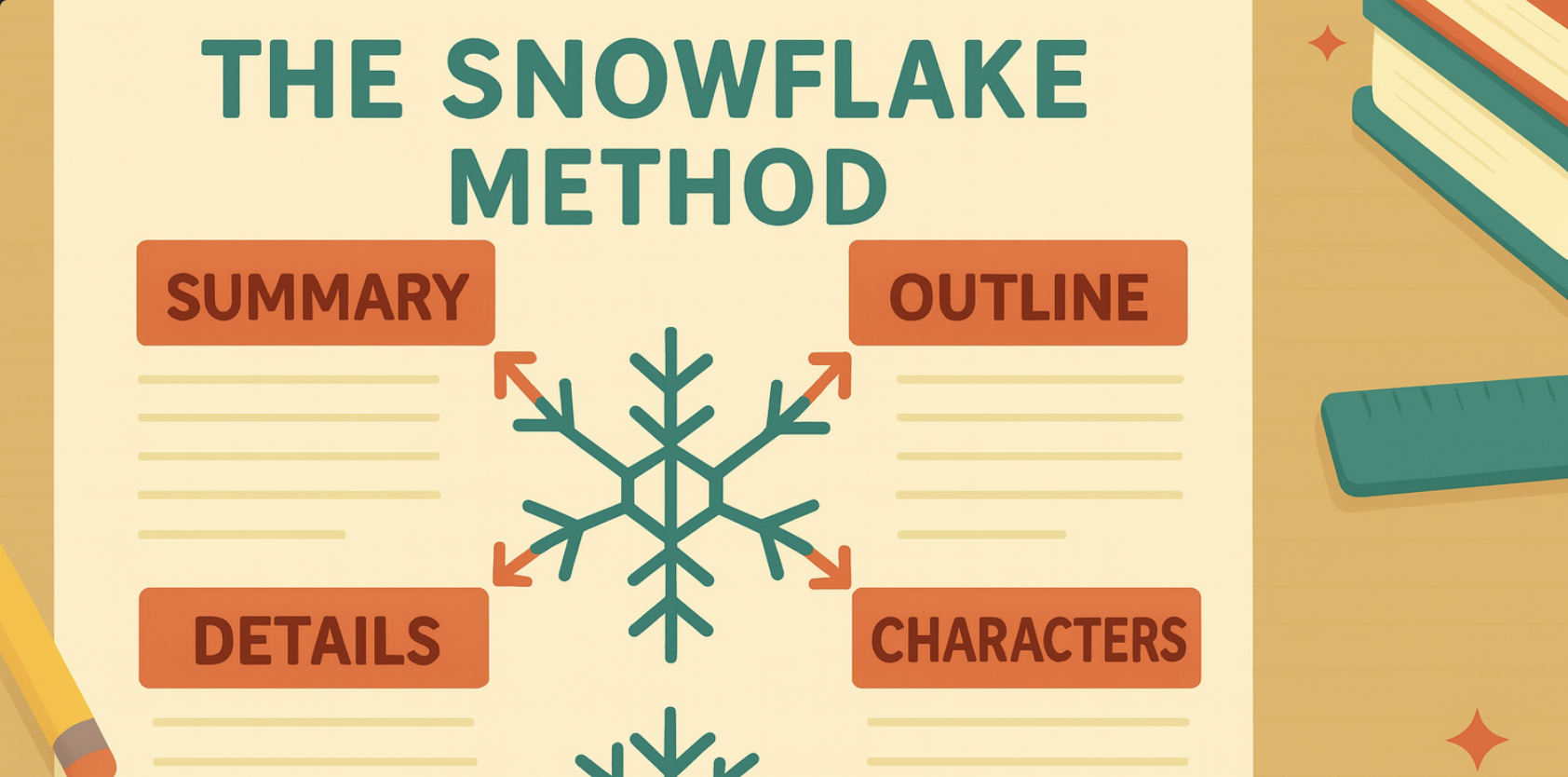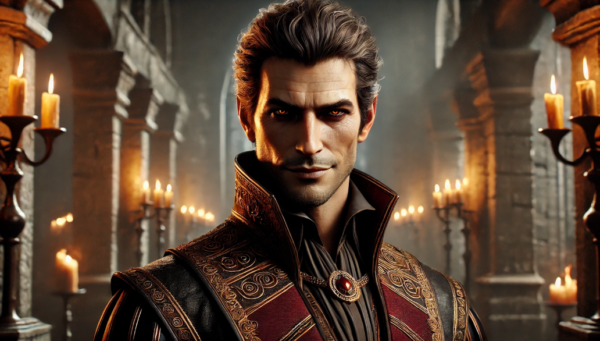E.M. Forster once cleverly distinguished between a story and a plot by implying that a story is just stuff that happens, but a plot—now that’s the secret sauce that makes a story delicious. You may ask, “What is a plot?” or perhaps ponder, “What is a plot of a story?” Well, it’s what happens when you decide that your events shouldn’t just lay about lazily on the page. Instead, they ought to get up and do some heavy lifting, making everything matter more.
A plot isn’t just any old sequence of events. It’s an organized, high-stakes conga line of cause and effect. It’s the backbone that carries your characters from the “once upon a time” in your opening line to the “they lived happily ever after” at the end—or the “they didn’t” if you’re feeling a bit twisted. This intricate dance of events transforms a simple walk through narrative woods into an edge-of-your-seat rollercoaster ride.
And don’t get it twisted with what is a line plot—there’s no math here, just pure, thrilling narrative arcs. And what is plot in a story if not the roadmap that tells your characters where to turn next, often into disaster, misunderstanding, and occasionally, a fortuitous misadventure?
“The king died, and then the queen died of grief.” Sounds like a plot? More like a missed opportunity for drama! That’s a story that’s begging for a plot to spice things up and make us care why the queen found herself heartbroken.
By the end of this guide, not only will you understand the mechanics of building a compelling plot, but you’ll also be ready to weave your own tales that keep readers glued to the page, chuckling, gasping, and maybe even shedding a tear or two.
Ready to plot your next great story? Buckle up, because we’re about to dive into the art of making your events work hard so your readers can hardly stop reading!
What Is A Plot? A Simple Definition for Complex Stories
Let’s cut to the chase: what is a plot? In storytelling, the plot is more than just a sequence of events—it’s the glue that holds a story together. The plot of a story is the structured arrangement of events that are linked by a cause-and-effect relationship, driving the narrative forward and giving meaning to everything that happens.
To truly understand this, let’s revisit E.M. Forster’s famous example:
- “The king died, and then the queen died.” That’s a story—a chronological sequence of events.
- “The king died, and then the queen died of grief.” Now that’s a plot.
Why? Because in the second version, the queen’s death isn’t just another event—it’s the effect of the king’s death. One event causes the next, creating a chain reaction that makes the narrative feel cohesive and meaningful.
This distinction between story and plot is crucial. A story answers what happened. A plot answers why it happened and what happens next. It’s the driving force that pulls readers along, making them wonder, “How did we get here?” and “What will happen next?”
Plot as the Engine of a Story
At its core, the plot is the engine that propels the story forward. It connects the dots between the beginning, middle, and end, ensuring that every event matters. Without a clear plot, stories can feel aimless or disjointed—characters drift without purpose, and events occur without consequence.
Consider a story without a plot: A character wakes up, eats breakfast, and goes to bed. Things happen, but nothing compels the reader to care. Now add plot: The character wakes up to find their city under attack, must escape, and then discovers a hidden strength within themselves. Suddenly, every action has weight and consequence, pushing the story forward.
The Power of Cause and Effect
A strong plot is all about cause and effect. One event triggers another, building momentum and raising stakes. This relationship keeps readers engaged because it creates logical progression and emotional investment. If a character makes a decision, the audience expects consequences. If something shocking happens, they want to know why.
This cause-and-effect structure also ensures that the plot isn’t just a random collection of exciting moments. Each twist and turn must stem naturally from what came before, leading the story toward its climax and resolution.
In summary, the plot definition goes beyond just telling what happens—it’s about creating a purposeful sequence of events that drive the story to its conclusion. Whether you’re writing a sweeping fantasy epic or a quiet literary piece, understanding how to build a plot that moves the story forward is the foundation of storytelling success.
After delving into the power of cause and effect in plot development, it’s intriguing to consider how modern statistics can further illuminate our understanding of narrative structures. According to an article in The New Yorker, statistical tools can uncover surprising patterns in fiction, offering new perspectives on how plots capture and retain reader interest. This analytical approach invites us to rethink traditional narrative techniques and their impact on storytelling.
Now that we’ve nailed down what plot is, let’s explore how to structure it for maximum impact.
Plot Structure—The Blueprint of Every Great Story
A great story doesn’t just happen by chance—it’s carefully crafted with a solid plot structure guiding every twist, turn, and reveal. Plot structure is the framework that organizes a story’s events, ensuring that each moment builds naturally to the next. Whether it’s an epic fantasy, a romantic comedy, or a thrilling mystery, successful stories rely on tried-and-true structures to engage readers and keep the narrative moving forward.
Let’s break down three of the most enduring and effective plot structures: Freytag’s Pyramid, the Three-Act Structure, and the Hero’s Journey.
Freytag’s Pyramid: The Classic Arc
Gustav Freytag, a 19th-century German novelist, developed a five-part plot structure known as Freytag’s Pyramid. This structure is especially common in classical literature and drama but still influences modern storytelling.
- Exposition – The story begins. Characters, setting, and the main conflict are introduced.
- Rising Action – A series of events builds tension and complications, leading to the story’s climax.
- Climax – The turning point, often the most intense moment, where the protagonist faces the central conflict.
- Falling Action – The aftermath of the climax; conflicts begin to resolve.
- Denouement (Resolution) – Loose ends are tied up, and the story concludes.
Example: In Romeo and Juliet, the exposition introduces the feuding families. The rising action covers their secret romance, the climax is Mercutio’s death, the falling action follows their desperate plans, and the denouement is the tragic double suicide.
Freytag’s Pyramid emphasizes how tension rises and falls in a natural arc, guiding the reader through the emotional highs and lows of the story.
The Three-Act Structure: A Filmmaker’s Favorite
Widely used in screenwriting and modern novels, the Three-Act Structure is a streamlined version of Freytag’s model, breaking the story into three distinct parts:
- Act One: Setup – Introduce the protagonist, setting, and the story’s central conflict. Ends with the Inciting Incident that forces the protagonist to act.
- Act Two: Confrontation – The protagonist faces obstacles, rising stakes, and setbacks. This act typically contains a Midpoint twist and ends with the story’s Climax.
- Act Three: Resolution – The protagonist confronts the final challenge, leading to the resolution and a new status quo.
Example: In Harry Potter and the Sorcerer’s Stone:
- Act One: Harry learns he’s a wizard and enters Hogwarts.
- Act Two: Harry uncovers the mystery of the Sorcerer’s Stone and faces challenges.
- Act Three: He confronts Voldemort and secures the Stone, restoring balance.
This structure is clean and flexible, making it ideal for everything from blockbuster movies to bestselling novels.
The Hero’s Journey: The Call to Adventure
Popularized by Joseph Campbell, the Hero’s Journey is a universal story structure that follows a hero’s transformative adventure. It’s often used in fantasy, science fiction, and epic sagas.
- Ordinary World – The hero’s normal life before the adventure.
- Call to Adventure – A challenge or event disrupts the hero’s world.
- Refusal of the Call – The hero hesitates or resists the journey.
- Meeting the Mentor – A guide or mentor provides wisdom or tools.
- Crossing the Threshold – The hero leaves the familiar world for the unknown.
- Tests, Allies, and Enemies – The hero faces challenges and meets companions.
- Approach to the Inmost Cave – The hero nears the greatest challenge.
- Ordeal – The hero confronts death or their greatest fear.
- Reward (Seizing the Sword) – The hero gains a reward or insight.
- The Road Back – The hero begins the journey home.
- Resurrection – The hero faces a final test and emerges transformed.
- Return with the Elixir – The hero returns, bringing knowledge or power to their world.
The Hero’s Journey taps into deep, mythic storytelling patterns, making it powerful and relatable across cultures and genres.
How Plot Structures Shape Stories Across Genres
Different genres often favor certain plot structures. Fantasy and sci-fi frequently follow the Hero’s Journey (Harry Potter, Star Wars), while dramas and literary fiction often use Freytag’s Pyramid (Hamlet, To Kill a Mockingbird). Action films and romantic comedies tend to follow the streamlined Three-Act Structure because it keeps the pacing tight and engaging.
Regardless of genre, these structures provide a roadmap for writers to shape their stories effectively. They ensure that events build naturally toward the story’s climax and that every twist and turn serves a purpose in moving the protagonist’s journey forward. Mastering plot structure gives writers the tools to craft stories that are emotionally powerful and logically sound. Whether you’re building a tight, three-act thriller or guiding a hero through a grand journey, these structures help transform ideas into unforgettable narratives.
In the next section, we’ll dive deeper into the key plot points that make these structures work. Stay tuned—this is where stories truly come to life!
Key Plot Points—The Building Blocks of Narrative
Every great story is built on a series of crucial moments that push the narrative forward and shape the protagonist’s fate. These moments, known as plot points, are the essential building blocks that transform a simple idea into a compelling story. Without them, a story can feel flat and directionless. With them, it becomes a dynamic journey filled with tension, conflict, and resolution.
Let’s break down the five essential plot points that form the backbone of a strong narrative:
1. Inciting Incident – When the Story Begins
The Inciting Incident is the spark that ignites the story. It’s the moment when the ordinary world is disrupted, forcing the protagonist to take action. This is where the story begins—before this, everything is setup and background.
This event isn’t always dramatic, but it must be significant enough to propel the protagonist into the main conflict. Without a strong Inciting Incident, the story lacks momentum.
2. Rising Action – Tension and Conflict Build
The Rising Action makes up the bulk of the story. This is where tension escalates, challenges arise, and the protagonist faces increasingly difficult obstacles. Conflicts deepen, alliances form, and stakes get higher, all leading up to the story’s peak.
The Rising Action keeps the reader hooked by constantly raising the stakes. Each event should push the protagonist closer to the inevitable confrontation with their greatest challenge.
3. Climax – The Turning Point
The Climax is the story’s most intense and emotionally charged moment. This critical turning point is where everything changes—the protagonist confronts the central conflict head-on, and their actions determine how the story will end.
The Climax is the moment of truth. It tests the protagonist’s growth and forces them to make decisions that directly shape the outcome of the story.
4. Falling Action – Tying Up Loose Ends
After the high of the climax, the Falling Action begins. This is where the dust settles and the consequences of the protagonist’s choices play out. Conflicts begin to resolve, and the story starts moving toward its conclusion.
This phase is essential for closure. It gives readers a chance to process the aftermath of the climax and prepares them for the story’s ending.
5. Resolution – How the Story Ends
The Resolution (or denouement) is where the story fully concludes. Loose ends are tied up, and the protagonist’s journey is complete. This is the “new normal,” showing how the world has changed after the events of the story.
A satisfying Resolution doesn’t have to mean a happy ending, but it should provide closure. Whether it’s tragic, hopeful, or bittersweet, it should feel like a natural conclusion to the story’s journey.
Mastering Plot Points for Stronger Stories
Understanding and effectively using these essential plot points is critical for building stories that resonate. Each phase—Inciting Incident, Rising Action, Climax, Falling Action, and Resolution—works together to create a powerful, cohesive narrative.
By carefully crafting these moments, writers can ensure their stories are not only engaging but also emotionally impactful, with a clear trajectory that guides the reader from the first page to the last.
Next, we’ll explore how to enhance these plot points with clever plot devices that keep readers hooked and coming back for more.
Plot Devices—Tools to Keep Readers Hooked
Even the strongest story structure can benefit from a little extra flair. That’s where plot devices come in. These are narrative tools that writers use to introduce twists, deepen conflict, and keep readers turning the page. Used wisely, plot devices can turn ordinary story events into unforgettable moments. Used poorly, they can frustrate readers and weaken the story.
Let’s explore some of the most effective plot devices and how they can supercharge your narrative.
The MacGuffin – The Object of Desire
A MacGuffin is an object, goal, or person that drives the plot forward, even if its actual significance is minimal. The value of the MacGuffin isn’t in what it is, but in how badly the characters want it.
Examples:
- In Indiana Jones and the Raiders of the Lost Ark, the Ark of the Covenant motivates Indiana Jones and the Nazis, but the story is really about Indy’s daring adventures.
- In Harry Potter and the Philosopher’s Stone, the Sorcerer’s Stone is the object everyone wants, but it primarily serves to reveal deeper conflicts and relationships.
The MacGuffin creates movement and urgency, pushing characters into action and setting off a chain of significant events.
The Red Herring – The Art of Misdirection
A Red Herring is a misleading clue or event designed to divert the audience’s attention from the real issue or twist. This plot device is especially popular in mysteries and thrillers, keeping readers guessing and heightening suspense.
Examples:
- In Sherlock Holmes stories, suspects and evidence often lead readers down the wrong path before Holmes reveals the truth.
- In Harry Potter and the Prisoner of Azkaban, Sirius Black is painted as the villain, only for readers to discover he’s actually protecting Harry.
Red herrings add depth to a story’s structural elements by complicating the story’s conflict and keeping readers off-balance.
Deus Ex Machina – The Last-Minute Rescue
Deus Ex Machina (Latin for “god from the machine”) refers to a sudden and unexpected solution to a complex problem. This plot device dates back to ancient Greek tragedies, where gods would literally be lowered onto the stage to resolve the conflict.
Examples:
- In The Lord of the Rings: The Return of the King, the eagles arrive just in time to rescue Frodo and Sam from Mount Doom.
- In Jurassic Park, the T-Rex appears suddenly to save the characters from velociraptors.
While this plot device can resolve tension in surprising ways, it can feel unearned if not carefully set up. When used effectively, it delivers a shocking turning point that shifts the story’s direction.
Flashbacks and Flashforwards – Bending Time
Playing with the sequence of story events through flashbacks and flashforwards allows writers to reveal important backstories or hint at future outcomes, enriching the narrative.
Examples:
- In Lost, flashbacks reveal the characters’ past lives, deepening the story’s conflict and motivations.
- In Harry Potter and the Half-Blood Prince, flashbacks to Voldemort’s past explain his rise to power and his weaknesses.
This device creates layers in the story’s structural elements, adding complexity and emotional weight to the plot. It can also build suspense by revealing critical information at just the right moment.
Plot Devices: Adding Twists and Tension
These plot devices aren’t just narrative tricks—they’re tools that, when used thoughtfully, enhance the story’s turning points and deepen the conflict. They shape how readers experience the story and can make the difference between a predictable plot and a thrilling page-turner.
- MacGuffins drive characters to pursue goals.
- Red Herrings create doubt and suspense.
- Deus Ex Machina delivers shocking resolutions.
- Flashbacks/Flashforwards add depth and tension.
The key is using these devices to serve the story, not to cover up weak plotting. A well-placed plot device can elevate a story’s significant events, making them more impactful and unforgettable.
Next, we’ll explore the Seven Basic Plots and how they form the foundation of nearly every story you’ve ever loved.
The Seven Basic Plots—Every Story Ever Told
What if every story you’ve ever read, watched, or heard could be boiled down to just seven basic patterns? According to author Christopher Booker in his influential work The Seven Basic Plots: Why We Tell Stories, every narrative in history follows one (or a combination) of seven fundamental plotlines. These timeless structures shape the protagonist’s journey, guiding characters through triumphs, tragedies, and transformations.
Let’s dive into these seven basic plots, with classic examples to show how they bring stories to life.
Overcoming the Monster
In this plot, the protagonist faces a great evil or overpowering antagonist and must defeat it to restore balance or save others. The “monster” could be a literal beast, a villain, or even an internal struggle.
Examples:
- Beowulf battles the monstrous Grendel and his mother to save a kingdom.
- In Jaws, the town must defeat a killer shark terrorizing the beach.
Rags to Riches
The protagonist starts in poverty or obscurity and rises to wealth, success, or personal fulfillment through hard work, destiny, or luck.
Examples:
- Cinderella transforms from a mistreated servant into a princess.
- In Harry Potter, Harry goes from an unloved orphan to a celebrated wizard.
The Quest
A hero embarks on a journey to achieve a specific goal, encountering obstacles, allies, and enemies along the way. This quest is both physical and emotional, requiring courage and perseverance.
Examples:
- The Lord of the Rings follows Frodo’s perilous mission to destroy the One Ring.
- In Indiana Jones and the Last Crusade, Indy searches for the Holy Grail.
Voyage and Return
The protagonist travels to a strange or unfamiliar world, faces challenges, and returns home wiser and changed. Unlike the Quest, the goal here is often survival and self-discovery rather than achieving an external prize.
Examples:
- Alice in Wonderland sees Alice explore a bizarre world and return home with newfound perspective.
- The Wizard of Oz follows Dorothy’s journey through Oz and her return to Kansas.
Comedy
In a Comedy, confusion and misunderstandings create conflict, but through twists and turns, everything is resolved with a happy ending. This isn’t just about humor—it’s about the restoration of order from chaos.
Examples:
- In Much Ado About Nothing, mistaken identities and playful banter lead to romance.
- Modern romantic comedies like When Harry Met Sally use emotional and relational mix-ups to explore love.
Tragedy
Unlike other plots, Tragedy focuses on the downfall of the tragic hero. Driven by a fatal flaw (hubris, greed, jealousy), the protagonist makes irreversible mistakes that lead to their undoing.
Examples:
- Hamlet spirals into revenge and madness, leading to his hero’s death.
- In Macbeth, unchecked ambition drives Macbeth to ruin.
Rebirth
In Rebirth stories, the protagonist undergoes a profound transformation, often after experiencing a metaphorical or literal “death.” They emerge renewed, with a better understanding of themselves and the world.
Examples:
- In A Christmas Carol, Ebenezer Scrooge transforms from a miser into a generous man after confronting his past, present, and future.
- Beauty and the Beast sees both Belle and the Beast change through love and compassion.
Why the Seven Basic Plots Matter
These basic plots are timeless because they reflect core human experiences—struggle, ambition, love, loss, and transformation. Whether a story is ancient or modern, fantasy or reality, it likely draws from one or more of these patterns.
- Overcoming the Monster satisfies our need for justice.
- Rags to Riches fuels dreams of success.
- The Quest inspires bravery.
- Voyage and Return comforts us with self-discovery.
- Comedy reminds us that life can be joyful.
- Tragedy warns of human flaws.
- Rebirth gives us hope for change.
Recognizing these plots can help writers understand the foundations of storytelling and craft stories that resonate deeply with readers.
Next, we’ll look at how stories can successfully use these plots in action—and how you can apply them to your own writing.
Crafting Your Own Story—From Idea to Plot Outline
Every unforgettable story starts with a single idea. But how do you turn that spark into a fully developed narrative? The answer lies in building a solid plot outline. Whether you’re writing your first short story or a full-length novel, a well-structured plot is your roadmap from beginning to end.
By starting with a rough sketch, defining the main conflict, and organizing your story with proven structures, you lay the foundation for a compelling narrative. Layer in carefully chosen plot points and creative devices, and your story will have the momentum and emotional depth to engage readers from start to finish.
Remember, the goal isn’t perfection on the first try. Plotting is part planning and part discovery. So, grab your notebook (or keyboard), and start building the blueprint for your next great story.
Plotting Your Way to a Great Story
Every unforgettable story begins with a strong, well-structured plot. It’s the key element that turns a collection of ideas into a complete narrative—guiding characters through conflict, growth, and resolution. Whether you’re crafting an epic fantasy or a heartfelt short story, understanding how to build a solid plot is essential for storytelling success.
From identifying major plot points to experimenting with classic story structures like the Three-Act Structure or Freytag’s Pyramid, every decision you make shapes the journey. A well-crafted plot doesn’t just tell a story—it creates an experience that readers can’t put down.
But here’s the best part: you don’t need to have it all figured out right away. Every great story starts with a single idea and grows from there. So why wait? Start mapping out your whole story, layering in twists, turns, and unforgettable moments.
After all, even the best stories need a plot twist—or two.
Take your storytelling to the next level with Spines! Our powerful writing tools are designed to help you outline, structure, and perfect your plot from start to finish—because every writer deserves the right tools to write something amazing.
FAQs – What is A Plot?
Q: What is a plot in a story?
A plot is the sequence of events that make up a story, where each event affects the next through the principle of cause-and-effect. It’s the structured arrangement of events that helps convey the story’s message and keeps the audience engaged.
Q: What are the 5 elements of plot?
The five elements of a plot are:
- Exposition: The introduction of the story where characters, setting, and the main conflict are established.
- Rising Action: A series of events that build from the conflict and lead to the climax.
- Climax: The turning point of the story, which is the moment of greatest tension and the outcome of the main conflict begins to take place.
- Falling Action: Events that unfold from the climax leading to the end of the story, where the conflict moves towards resolution.
- Resolution: The conclusion of the story where conflicts are resolved, creating a release of tension, and the outcomes for the characters are revealed.
Q: What is the basic definition of plot?
The plot is the organized pattern or sequence of events that make up a story. It revolves around a central conflict or problem faced by the main characters, structured through a series of events that unfold and resolve the conflict.
Q: How to write a plot summary?
To write a plot summary, start by introducing the main characters and setting. Outline the inciting incident that establishes the main conflict, follow the key events in the order they appear in the story, focusing on how they contribute to the narrative’s climax. Conclude with how the climax resolves and any aftermath in the resolution of the story. Keep it concise and focus on the main plot points without delving into subplots or detailed character analysis.
Q: What is a good plot?
A good plot is one that is engaging, coherent, and well-structured, with a clear beginning, middle, and end. It should have a compelling conflict or challenge that the protagonist must overcome, which drives the narrative forward. A good plot also includes developments that are unpredictable yet believable, and it leads to a satisfying resolution that resonates with the audience, providing closure to the story’s main conflicts and questions.








